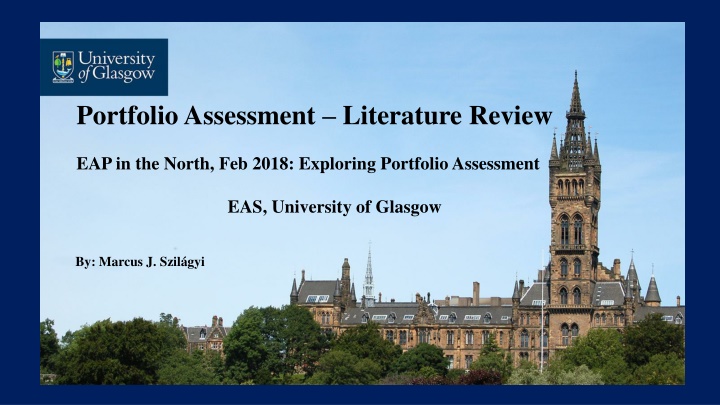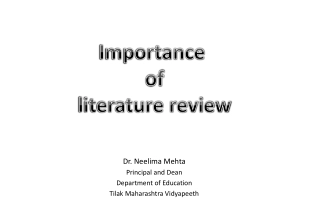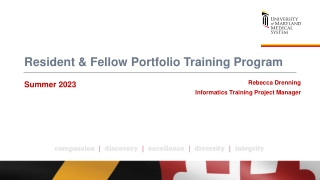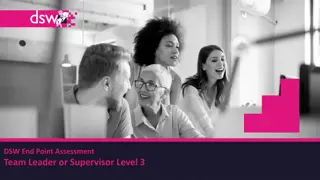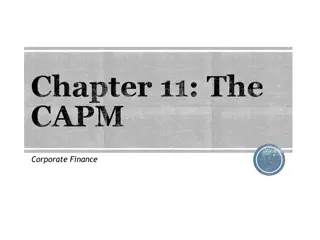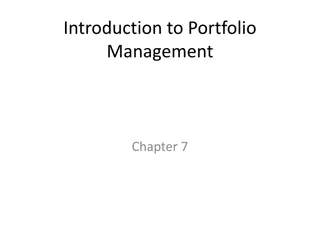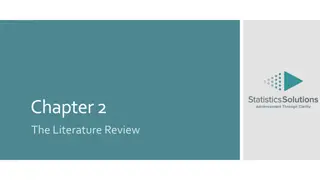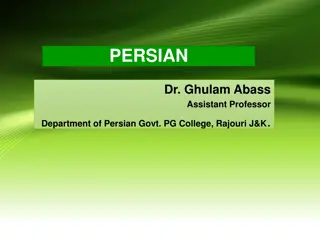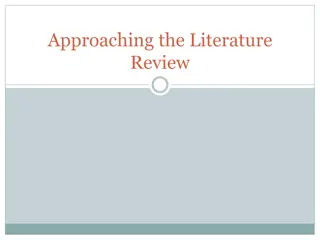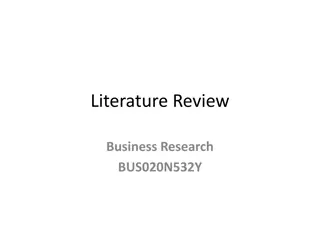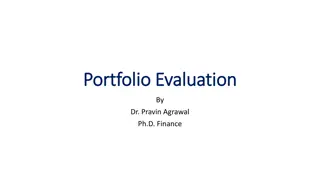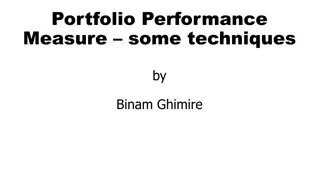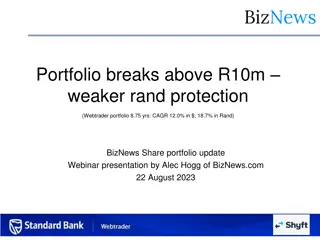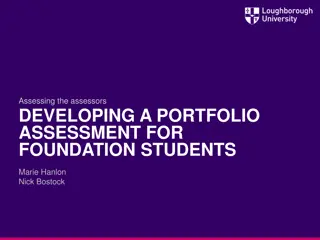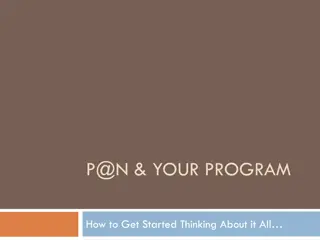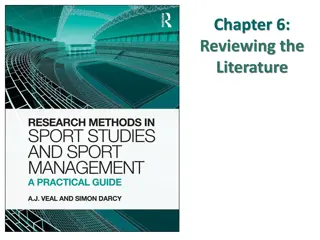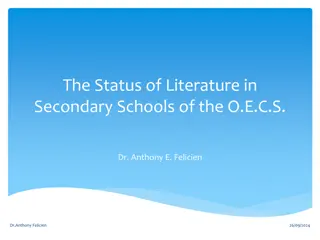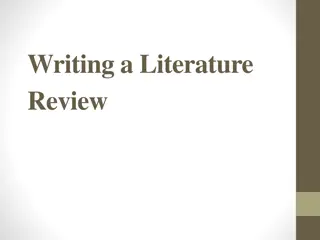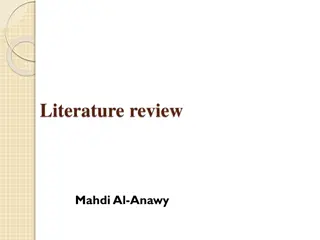Portfolio Assessment-Literature Review
This literature review delves into the various aspects of portfolio assessment in EAP, discussing the definition, types, advantages, features, and importance of reflection. It explores how portfolios help in monitoring student progress, showcasing achievements, and providing a holistic assessment method.
Download Presentation

Please find below an Image/Link to download the presentation.
The content on the website is provided AS IS for your information and personal use only. It may not be sold, licensed, or shared on other websites without obtaining consent from the author.If you encounter any issues during the download, it is possible that the publisher has removed the file from their server.
You are allowed to download the files provided on this website for personal or commercial use, subject to the condition that they are used lawfully. All files are the property of their respective owners.
The content on the website is provided AS IS for your information and personal use only. It may not be sold, licensed, or shared on other websites without obtaining consent from the author.
E N D
Presentation Transcript
Portfolio Assessment Literature Review EAP in the North, Feb 2018: Exploring Portfolio Assessment EAS, University of Glasgow By: Marcus J. Szil gyi
DEFINITION OF A PORTFOLIO An integrated collection of materials assembled by students (and / or teachers) to demonstrate achievement and / or progress in a given area over time. (Freeman and Lewis, 1998; Carr and Harris, 2001 cited in Belgrad, Burke and Fogarty, 2008; Northwest Evaluation Association, 1991:4, cited in Wolcott, 1998, cited in Weigle, 2002; Huang, 2012).
TYPES OF PORTFOLIO Development Portfolios Private portfolio / Not assessed (Baume, 2013) Assessed Portfolios Best Pieces (Ibid) and / or - Demonstration of work in progress (Ibid) Format - E-portfolios eg. Padlet
PRINCIPAL ADVANTAGES A form of continuous assessment over a longer period of time Help students and teachers monitor student progress, especially with the setting and achieving of learning objectives (ILOs) Helps teachers monitor the progress of a given course. Weigle (2002)
NINE FEATURES PRESENT PORTFOLIOS Collection 1. Range 2. Context richness show what has been accomplished 3. Delayed Evaluation eg. Re-drafting 4. Selection 5. Student centred control Especially for points 4 & 5 6. Reflection of self-assessment 7. Measuring growth along specific parameters (Provide means of) 8. Measure development over time. 9. Hamp-Lyons and Condon (2000)
THREE MOST IMPORTANT FEATURES Collection Selection Reflection Hamp-Lyons and Condon (2000)
REFLECTION Deliberate reflection turns (work collected) into a portfolio Lam (2017) Types of Reflection Reflection ON action (Sch n, 1982, cited in Baume, 2003) After completing the task reviewing how well it went Reflection IN action (Ibid) Part of the undertaking of the task as well as the final product
MAIN ADVANTAGES OF PORTFOLIO ASSESSMENT OVER TRADITIONAL TESTING 1) Construct validity Continuous assessment over time 2) Authenticity More reliable indicator of student progress over time especially L2 writing 3) Interactiveness (Action) - Students take greater responsibility for own studies 4) Impact (Result) The learning process which occurs particularly with reflection and feedback Weigle (2002)
DISADVANTAGES 1) Reliability If varied can be difficult to grade (Weigle, 2002) 2) Practicality Time (Lo, 2010) - Explanation of process to students (Lo, 2010) - Teacher training (Lam, 2017; Hamp-Lyons, 2006, 2007, 2016 cited in Lam, 2017) 3) Psychology Students Grades (Weigle, 2002) - Teachers Testing (Ibid) - Technology - Anxiety / Frustration technology (Hung, 2012)
RESEARCH INTO PORTFOLIO ANALYSIS - Weigle (2002) Not enough research - Lo (2010) Process / Time - Lam (2017) Review of literature Three recommendations i) Suitable student induction ii) Teacher facilitation iii) Suitable training of teachers - Pearson (2017) EAP Setting positive results
Thank you for listening to my talk
REFERENCES Baume, D. (2003) Supporting Portfolio Development. York: Learning and Teaching Support Network (LTSN) Belgrad, S., Burke, K. and Fogarty, R. (2008) The Portfolio Connection: Student Work Linked to Standards (3rd Ed) London: SAGE Ltd. Freeman, R. and Lewis, R. (1998) Planning and Implementing Assessment. London: Kogan Page Limited Hung, S-T.A. (2012) A washback study on e-portfolio assessment in an English as a Foreign Language teacher preparation program . Computer Assisted Learning, Vol. 25:1, pp. 21-36 Lam, R. (2017) Taking stock of portfolio assessment scholarship: From research to practice Assessing Writing Vol. 31, pp. 84-97 Lo, Y-F. (2010) Implementing reflective portfolios for promoting autonomous learning among EFL college students in Taiwan . Language Teaching Research. Vol. 14(1) pp. 77-95 Pearson, J. (2017) Processfolio: Uniting Academic Literacies and Critical Emancipatory Action Research for Practitioner-Led Inquiry Into EAP Writing Assessment . Critical Enquiry in Language Studies. Vol. 14:2-3, pp. 158-181 Weigle, S.C. (2002) Assessing Writing. Cambridge: Cambridge University Press.
